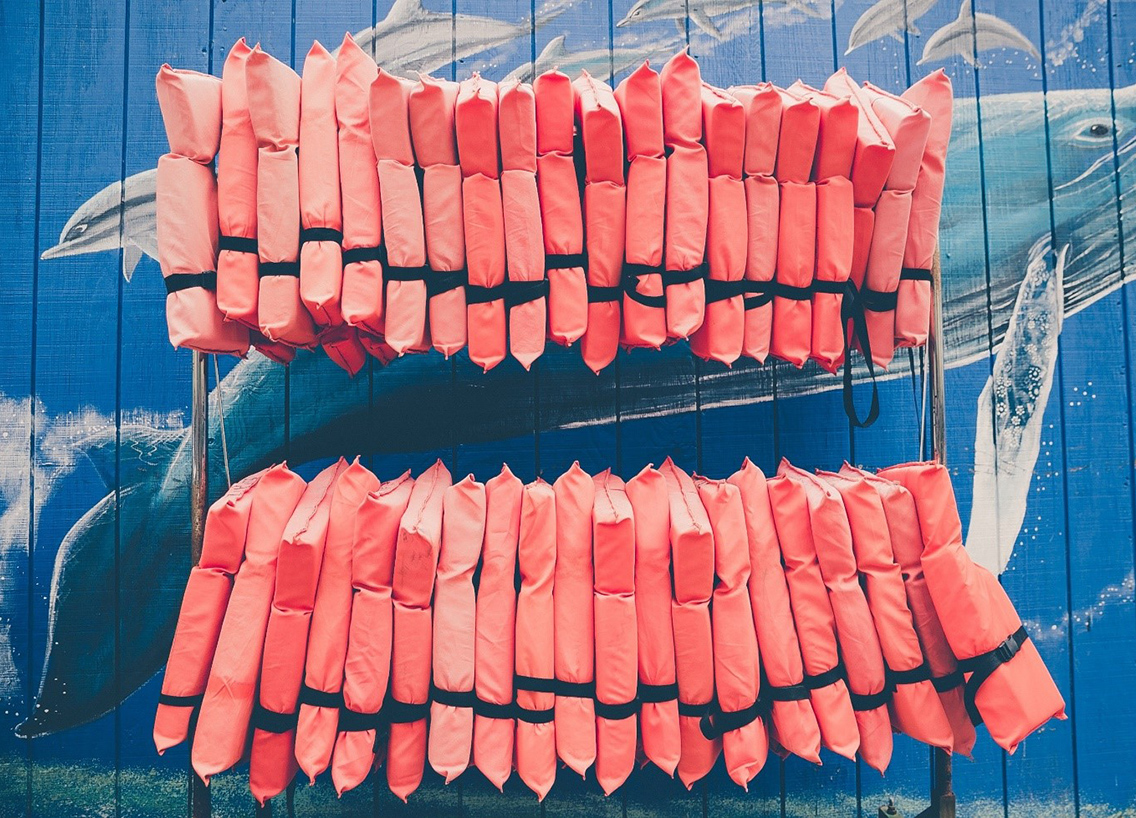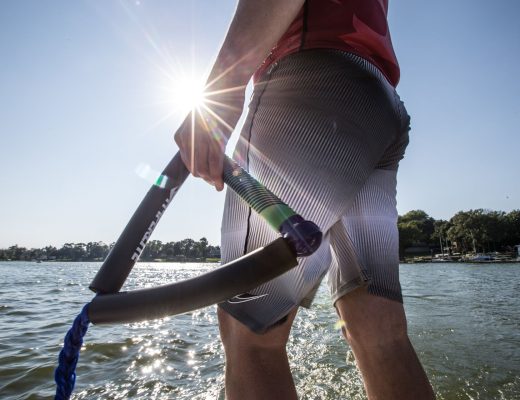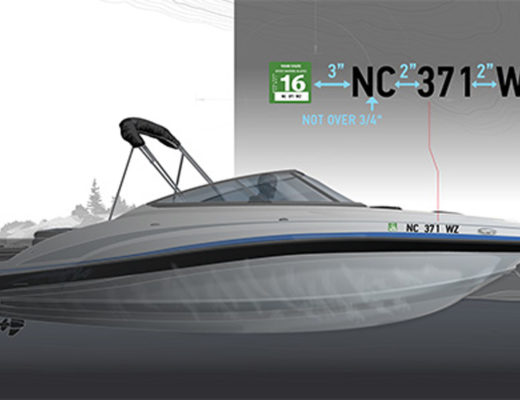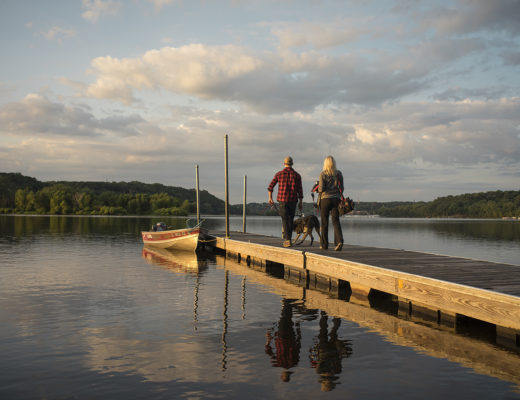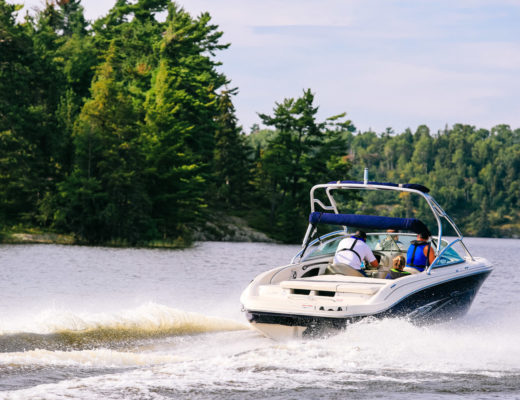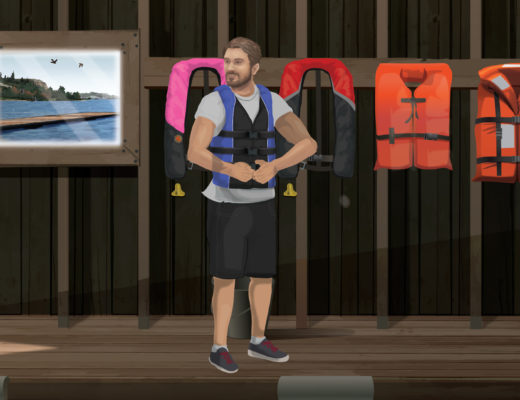At BOATsmart!, we’re big proponents of spending as many of our days as possible in the water. There’s just something about the sun sparkling on the surface, the feeling of crashing waves, and boat days galore. Safety is crucial, though – which is where wearing the proper life jacket comes in.
Wearing a properly fitted life jacket built for your body type and activity style is essential to safely enjoy activities and have fun on the water. Whether wearing a life jacket on the boat or having a life jacket for watersports, you’ll need to know the best practices for life jacket wearing.
With our guide to adult life jackets, you’ll be better prepared for your next day out on the water. So, from the types of personal flotation devices (PFD) to storage tips, here’s everything you need to know about adult life jackets.
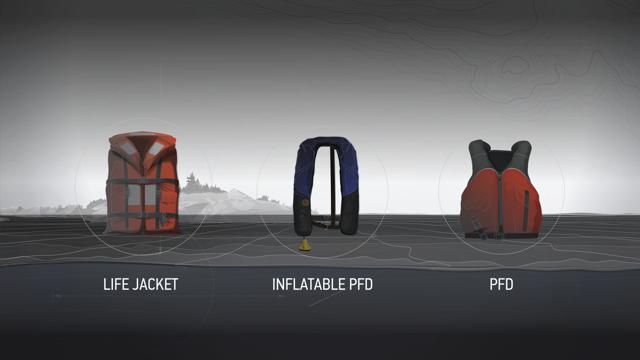
What Are the Different Types of Life Jackets?
Life jackets – which used to fall in the category of Personal Flotation Devices (PFDs) in the United States – come in several classifications. These classifications have changed and evolved over time. While the classification process is now different, life jackets classified by type are still allowed and approved by the Coast Guard as long as they’re in good condition.
By knowing the different classifications, you’ll be able to pick out the perfect life jacket for you and your needs.
The “Old” U.S. Life Jacket Terminology
Though now known as the old labeling system, types were considered a great way to label life jackets in the past. Life jackets and PFDs with these older labels – the “type” labels – are still fine to use and are approved, but they are being phased out and replaced with new labels as time goes on.
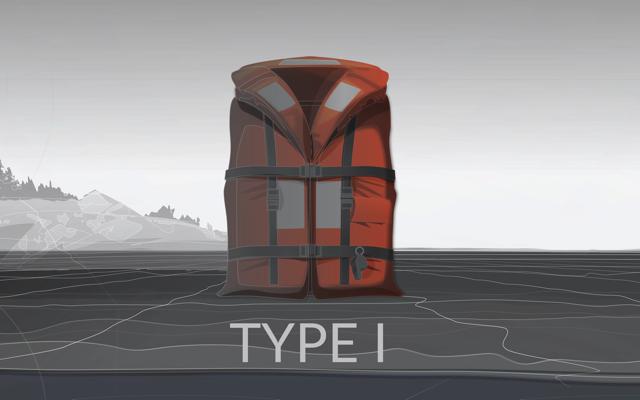
Type I PFDs: Inherently Buoyant
Type I Personal Flotation Devices are good for every kind of water condition, from the calmest of waves to the roughest of waters.
They’re not a lightweight type of life jacket. Instead, their bulkier build makes them incredibly buoyant. When wearing a Type I PFD, most unconscious individuals will be turned face-up.
- Inflatable Type I PFD Minimum Buoyancy: a minimum of 33.7 lb
- Foam Type I PFD Minimum Buoyancy: a minimum of 22.5 Ibs
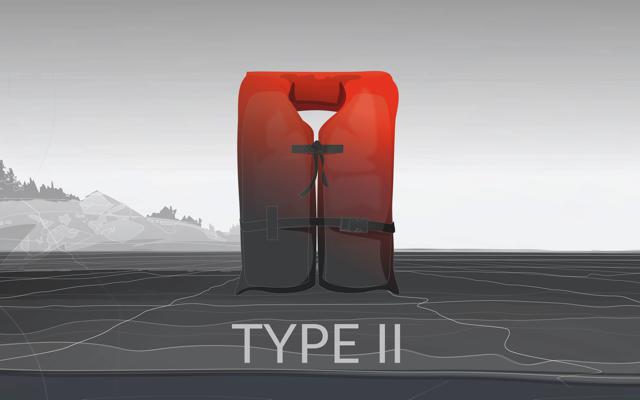
Type II PFDs: Near-Shore Buoyant Vests
Type II PFDs are meant for wearers who will be boating close to shore in locations where there is a high chance of a quick rescue. These lifejackets are also wearable for long days of water and land adventures, still buoyant and not super bulky.
- Inflatable Type II PFD Minimum Buoyancy: a minimum of 33.7 lb
- Foam Type II PFD Minimum Buoyancy: a minimum of 15.5 lb
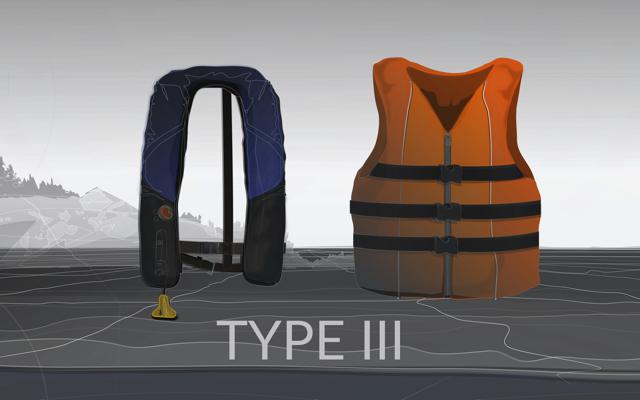
Type III PFDs: Flotation Aids
Also known as inshore buoyant vests, Type III PFDs are meant for situations where the wearer can see the shore and the waters are relatively calm. These lifejackets are designed with swimming and recreational boating activities and water sports in mind.
- Inflatable Type III PFD Minimum Buoyancy: a minimum of 22.5 lb
- Foam Type III PFD Minimum Buoyancy: a minimum of 15.5 lb
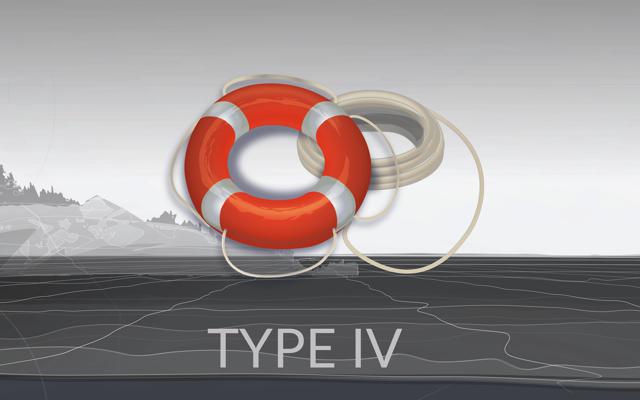
Type IV PFDs: Throwable Devices
Type IV PFDs aren’t life jackets but are designed to be thrown to a person needing rescue in the water. These floatation devices include buoyant rings, life rings, etc.
- Throwable Device Type IV PFD Minimum Buoyancy: A minimum of 16.5 lb
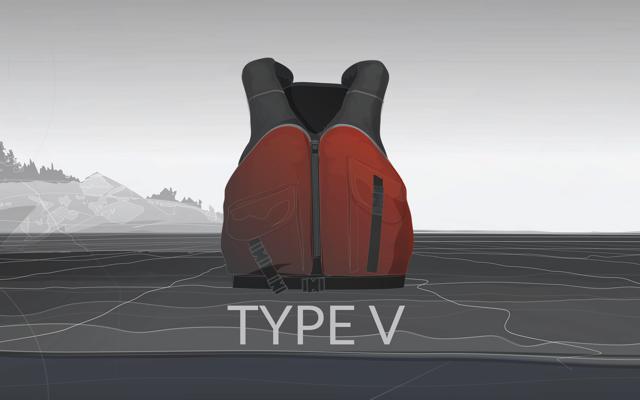
Type V PFDs: Special-Use Devices
Type V PFDs are specially designed for specific uses. From devices used to prevent hypothermia or rescue operations to those meant for kayaking, Type V PFDs must be used according to their specifications. Some of these devices are not approved for certain activities or must be worn to be approved for use.
- Minimum buoyancy: Depends on specific PFD

The “New” U.S. Life Jacket Terminology (Performance System)
While life jackets categorized by type are still approved for use as long as they’re in good condition, the new U.S. classification system relies on performance categories.
Inherent Life Jackets
These devices are always buoyant (usually made of foam) and meant to float immediately without any action required by the wearer. They are adjustable, typically in vest form, and of an accessible price and maintenance standard.
Inherent wearable life jackets are offered in a variety of performance levels, making them an excellent choice for most activity levels and environments.
Inflatable Life Jackets
These devices inflate with air (usually with an installed gas canister) and are activated when the wearer pulls the tube to inflate them. Inflatables come in a variety of performance levels but are never recommended for weak or non-swimmers, children, or those on personal watercraft.
Inflatable life jackets are also low bulk until inflated, making them a great option for constant wear.
Hybrid or Multi-Chamber Devices
These devices combine inherent material like foam along with an inflatable chamber. Hybrid devices typically perform with full buoyancy without inflation, and inflation adds additional performance that can sometimes even include turning and freeboard.
However, Hybrid wearers must be aware of the ability of the device they wear to stand up to their performance. Some of these devices do not offer maximum buoyancy until inflated.
Special Purpose
These devices are meant for specific activities or restricted circumstances, and they often require extra training or action by the wearer. This classification lends itself to extra buoyancy for white water rafting or providing additional visibility, inflatable belt pouches or manual inflation devices.

New Performance System Label Icons
New life jacket labels will feature an icon and number to indicate the intended conditions for use. The numbers range from Level 50 to Level 275, with smaller-level life jackets intended for use in calm water and close-to-shore scenarios and higher-level life jackets ideal for rougher waters and situations where rescue may take longer.
Level 50: This performance level is recommended for users with strong swimming skills. It is best for close-to-shore scenarios where immediate assistance is available. Life jackets of this type will not turn the wearer’s face up in the water.
Level 70: This performance level is recommended for calm or sheltered waters close to shore and where help is nearby. They will not turn the wearer face up in the water.
Level 100: This performance level is also recommended for use in calm waters. However, it will provide enough flotation that the wearer will have more time to wait for rescue. It has some turning ability but will not always turn the wearer face up.
Level 150: Devices of this performance level are more buoyant, appropriate for off-shore scenarios, and will turn the wearer face up in the water.
Level 275: Devices with a 275 performance rating are the most buoyant and are designed for offshore emergency rescue situations. Search and Rescue (SAR) crews can use them and will handle the additional weight of tools, equipment, or clothing.
New life jacket labels will also feature a warning panel. This panel will include important information about the device and its intended use, as well as activities that are not recommended for the device’s performance level, such as water skiing, towed sports, and personal watercraft operation.
What Are the Biggest Advantages and Disadvantages of Life Jackets?
The importance of a life jacket can’t be overstated, as it is the best means of safety for those in the water.
Life jackets are great to have on hand for sudden bad weather, warmth, and the possibility of an accident. While life jackets may have a reputation for being uncomfortable, they absolutely don’t have to be. The key is simply finding a life jacket that fits you well.
Need-to-Knows for Proper Life Jacket Fitting
Finding the perfect fit for your life jacket is the key to making sure that you’re comfortable and safe. Your life jacket can’t be too small — it won’t keep you afloat in the water – and it shouldn’t be too big because it’ll ride up and be uncomfortable.
Here’s what you need to know to ensure that you have the perfect fit:
- The fit should be snug, though not too tight.
- When you raise your arms over your head, your life jacket shouldn’t go too far.
- Adjust the waist strap first, then the side straps second, the shoulder straps third, and then the comfort straps.
- Try a different life jacket size if your adjustments haven’t led to the perfect fit.
- When possible, do a fit test in the water. Wade into chest-deep water and float onto your back to ensure the life jacket doesn’t ride up, slip over your head, or fail to keep you afloat.
What Are the Best Ways to Care for Your Life Jackets?
Caring properly for your life jackets is critical to making sure that they’re around and keeping you safe for a long time. Here are some key considerations for proper life jacket care:
- At the beginning of each season, give every life jacket a lookover to check for any missing hardware or pieces. Make sure that there are no rips, tears, or signs of mildew.
- Don’t clean your life jackets with harsh detergents or cleaners; instead, use gentle detergent or a specially-made life jacket cleaner.
- Don’t leave life jackets out in direct sun for any length of time, as this can affect buoyancy and fabric integrity.
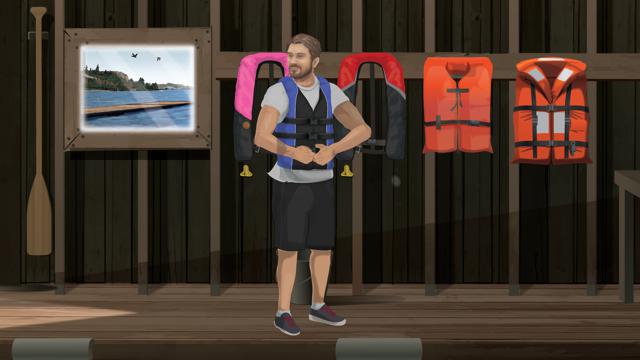
Best Storage Practices for Your Life Jackets
Storing your life jackets is essential to keeping them in great condition for many seasons to come since proper storage can prevent mildew, mold growth, and extra degradation.
Keep these storage practices in mind:
- Let life jackets drip dry before putting them in storage.
- Store in a well-ventilated, dry area away from direct heat.
- Try to hang life jackets whenever possible, and if stacking is necessary for storage, don’t place heavy items on top of them.
Learn More About Boating Safety With BOATsmart!
While life jackets are an essential piece of boating and water safety, so is taking a boater safety education course. With BOATsmart’s boating safety courses, you’ll be well-equipped for all of your days on the water. You’ll also be able to get your boating license (or Pleasure Craft Operator Card in Canada) to boat legally throughout every season.
Ready to learn more about staying safe on the water? In the U.S., choose the course for your state and get started. For boaters in Canada, take the course and purchase your license here.
Originally published August 17, 2020. Content most recently reviewed and updated July 30, 2024.
